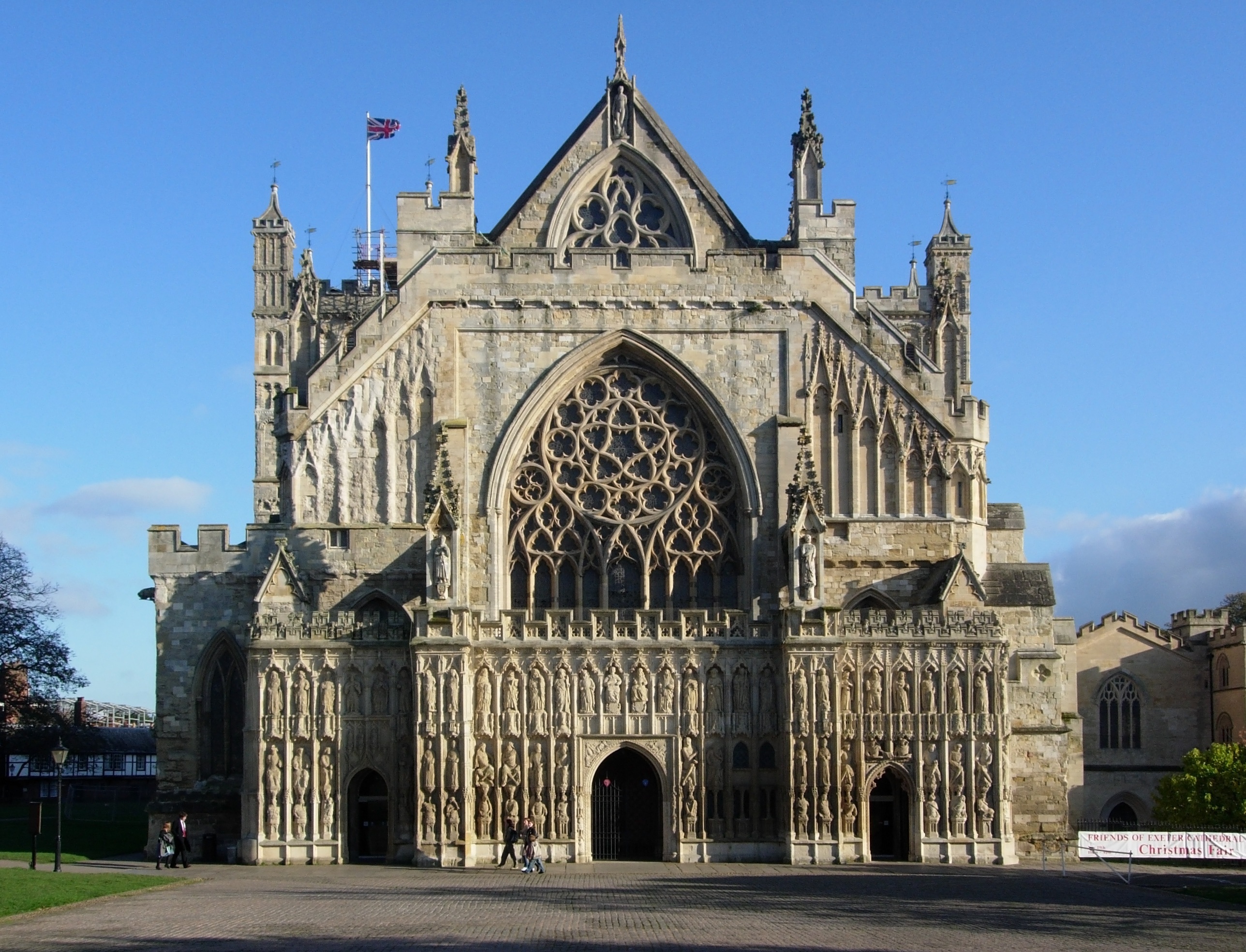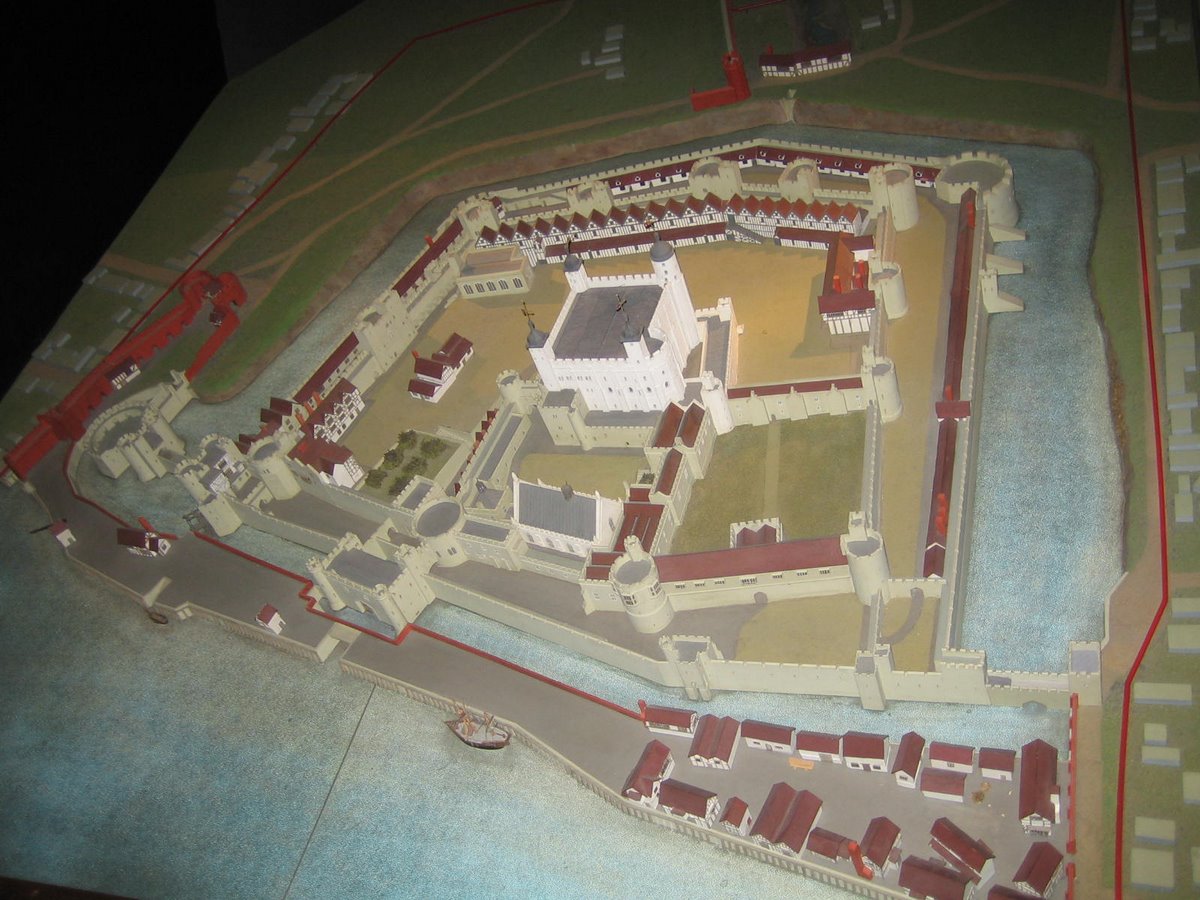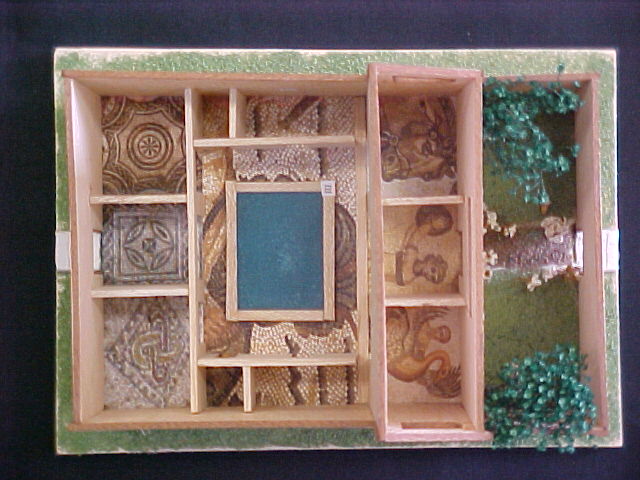Romanesque churches had very thick walls made of stone.
They had round arches.
They were built with only a few small windows, so they were dark inside.
Later, medieval churches were built in a new style called Gothic.
Gothic churches had thinner stone walls and stone roofs.
The roofs were vaulted.
Gothic churches were larger and taller than Romanesque churches.
They were bright inside because they had many large windows.
 |
| Romanesque Church Santa María del Naranco, in Oviedo, picture from Wikipedia by Amadalvarez |
 |
| Gothic Church in Exeter, picture from Wikipedia, by Torsten Schneider |











